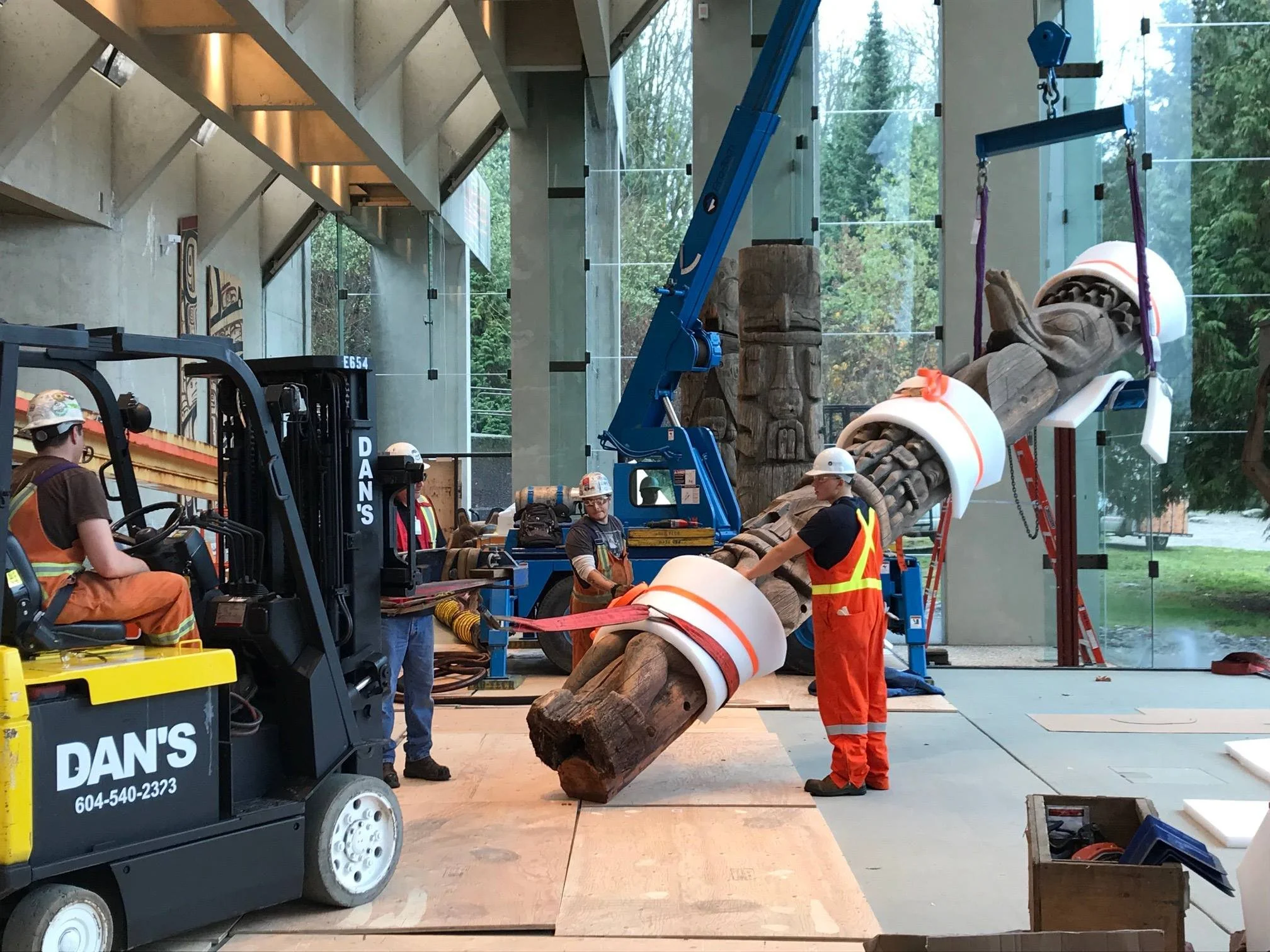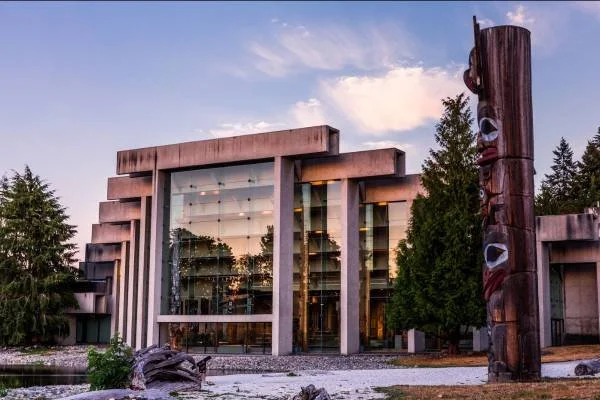Construction under way for massive seismic upgrades to the UBC Museum of Anthropology Great Hall
The rest of the facility remains open as the grand glass structure is entirely rebuilt
Work moving the irreplaceable carvings and poles from the Great Hall began more than a year ago. Photo by Heidi Swierenga
AFTER MANY YEARS of planning, the massive seismic upgrade of UBC Museum of Anthropology’s iconic Great Hall is finally under way—an epic project that entails architectural sensitivity, engineering knowhow, custodial care, and input from Indigenous communities.
The glazing has now been removed from the monumental facade, leaving the familiar concrete-beamed shell open for construction work. The atrium’s giant totem poles and carvings were all temporarily moved—most to the adjacent O’Brian Gallery. They’re laid on their sides for viewing there, as the rest of the museum remains open to visitors.
“We were just so thrilled that the [UBC] board of governors gave the go-ahead to the project in December,” MOA director Susan Rowley tells Stir. “I think everybody is relieved. It is such a remarkable opportunity and it’s so amazing to be able to create a space that will continue that architectural resilience. It’s about the health and well being of cultural heritage but also the health and well-being of all our visitors and staff.”
The Great Hall posed a special challenge when it came to seismic upgrades. The grand, five-storey-high windowed atrium houses huge, irreplaceable wood carvings–but its grand windowed structure puts it at particular risk if there’s an earthquake. In 1976, when late BC architect Arthur Erickson designed the glass-and-concrete landmark, not as much was known about that threat. In 2017, UBC tagged the Great Hall as being at high seismic risk, with project planning kicking off the next year.
The iconic structure with its five-storey glass windows was deemed to be a high seismic risk.
Adding to the sensitivity of the project is the fact that the heritage-status building is one of Erickson’s signature achievements. The celebrated architect was inspired by the post-and-beam architecture of Northwest Coast Indigenous people, creating a series of gateway-like concrete frames around the Great Hall.
Architects and the consulting team decided the best way to preserve the striking look of the building was to entirely rebuild the Great Hall, instead of girding it with extra steel beams or bracing. Nick Milkovich Architects Inc. is overseeing the reconstruction, which is estimated to cost $30.5 million, split between UBC and the provincial and federal governments.
“The aim is to re-create the Great Hall with that light that is so integral to the space—to maintain the aesthetic quality of the space,” explains Rowley. “It’s a very special space.”
Construction was to have started in 2021, but after some pandemic delays, crews are now working to install base isolators under a suspended main floor slab to absorb the impact of seismic activity, separating the building from the ground and from the adjoining museum structures. The Arthur Erickson Foundation has advised the process, and the Musqueam First Nation, whose traditional and unceded land the facility sits on, has been part of the working group.
The Great Hall normally looks out over a reflecting pool, amid an outdoor setting designed by late landscape architect Cornelia Oberlander that will also be remediated after construction.
You can even watch the rebuilding process live at the weblink here.
As for the rest of the museum, it and its thousands of artifacts from the Northwest Coast and around the globe are safely protected from the massive construction project by carefully insulated hoarding. The major show Sankofa: African Routes, Canadian Roots continues—as does the smaller, seismically-minded Shake Up: Preserving What We Value, an exhibit about convergence of earthquake science with Indigenous knowledge.
Meanwhile, Rowley and her team are now able to start looking to the future, and the careful protocols that will have to be followed for the raising of the poles in the Great Hall again; as with the lowering of the carvings that began more than a year ago, MOA is liaising with Indigenous communities and families to whom the cultural objects belong. The seismic upgrades—along with some significant improvements to energy-efficient lighting, skylights, fire protection, and other improvements—are scheduled for completion in 18 months.














